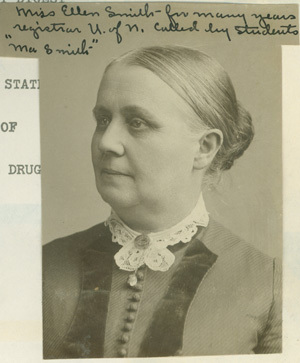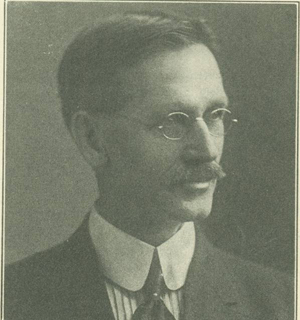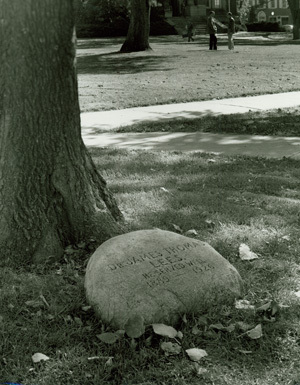Transitions
With the departure of Palmer, Ellen Smith remained a full-time tutor. There was a breakdown in the discipline of the students and there were suggestions of reorganizations. Chancellor Fairfield headed the Latin School to try and abide the rising problems. Soon the Board of Regents came to his aid.
Ma Smith
Miss Ellen Smith became principal of the Latin School in 1882. She was made adjunct professor of Latin in 1883. She was not only the first female faculty member of the University, but she also was the first woman with a right to vote in faculty meetings. She had a passion for her work and connected well with the students. The collegians called her "Ma Smith" because she was such a motherly and influential figure for them. After her position as principal, she became the Registrar of the University and held that position until her death in 1903.
As the only woman principal of the Latin School, Smith confronted numerous problems and tried to correct them. She brought the discipline the Latin School lacked in the time after Palmer's dismissal. She requested more assistance in instructing the students. The Board responded by electing Miss Madge Hitchcok to be a full-time tutor in the Latin School. Smith also tackled the issue of entrance examinations and wanted every student wishing to enter to be well-prepared in all the studies required. The exams now became stricter.
A milestone in her Principal-ship was Smith's campaign to have the right to vote during faculty meetings. As mentioned above, she was granted that wish. David Henry Bergquist, in his thesis affirmed that Smith's "careful attention to duty, her strong defense of her administration against criticism, her concern for quality student work, and her penchant for quality instruction, moreover, helped to sustain and strengthen the Latin School through a difficult period in University history- a period in which the University was without a chancellor" (79).
Desire to Eliminate
From the very beginning of the Latin School, there has been opposition against its existence. The faculty was very vocal in their opinion against the Latin School. The quality of secondary education was rising in Nebraska so the faculty committee conducted a survey to make the secondary schools the replacements for the Latin School. This led to rumors that the preparatory department was going to be abolished. The Hesperian Student reacted to the surfacing rumors that plagued the campus. It was in favor for the demise of the department; however, the Chancellor abated all the rumors. The Board of Regents confirmed that the Latin School was not going anywhere and supported the existence of the school.
Although the Regents supported the Latin School, the new Chancellor Manatt was in favor of the abolishment of the department. He stated that by law the Latin School was not a part of the University and that it would be discontinued as soon as possible. He felt that the preparatory department was not fulfilling its desired purposed when it was established. Although the Chancellor was against the Latin School, under the principal-ship of Charles Bennett, the preparatory department still flourished. Manatt increased the level of scholarly learning at the University to compensate it for being around. Bennett helped the Latin School develop further.
Dr. James T. Lees
James Lees was the last great principal of the Latin School before its demise. He succeeded Bennett in 1889. He continued the work of Manatt and Bennett. He did face problems when the public schools were doing the same work as preparatory department. Lees managed to conduct the influx of preparatory students by maintaining the integrity of the school. It was inevitable that the Latin School was soon to fall. Lees was appointed chair of the Classics department and continued his career at the University in this position. He has published numerous works and is one of the accomplished principals. His memorial is on campus by Architecture Hall.



